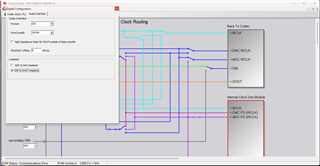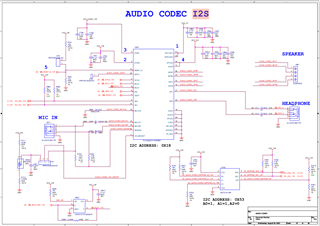Tool/software:
Hi Sir,
Actually I am trying to validate my I2S as a part of it I am tring to connect my cpu to audio codec and tring to play a sine wave and configure the codec in recording mode with I2C so that codec receives the audio samples and after I enable the I2S I can receive the samples on i2s side from codec but I am not getting any samples. I have followed a AIC3110_init configuration in codec folder for configuring in recording mode. So can you please help me in suggesting the working configuration in recording mode and how can I proceed doing this
Thanks and Regards,
Geetha.




